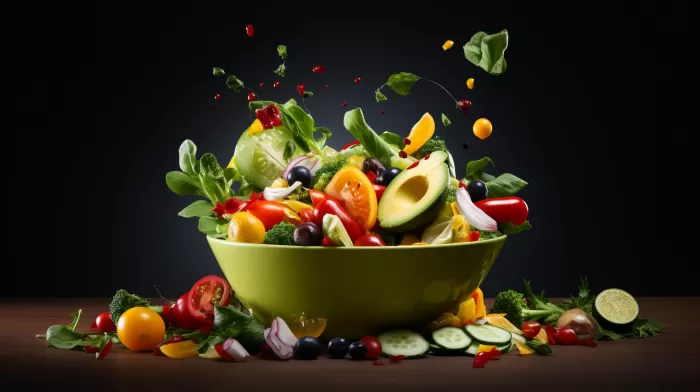If you’re curious about why the paleo diet can quickly improve your health, you’re in for an interesting microscopic journey. There are billions of microscopic reasons for the benefits of the paleo diet, and they reside inside your digestive tract. They’re called microflora or microbiota and are friendly inhabitants of your intestines that help produce nutrients that nourish your body. Also, they assist in maintaining proper immune system function and protect your body from developing autoimmune diseases.
Feeding Your Friendly Bacteria with Fiber
The key to keeping your friendly bacteria thriving is by consuming a wealth of dietary fiber found in the fruits and vegetables included in paleo eating. This is a scientifically proven fact that even critics of the paleo diet struggle to rebut.
On the other hand, many of the fiber-poor grains and processed foods promoted by giant food conglomerates do the opposite. They nourish harmful microbes connected to being overweight and developing metabolic problems that could lead to type 2 diabetes.
Fermentation: A Way to Produce Benefits
Your microflora facilitates various benefits, one of which is through the fermentation of dietary fiber derived from fruits and vegetables. Interestingly, fiber does not contain any useable calories that your body can absorb, but your bacteria thrive on these indigestible starches.
Research published in the British Medical Journal reveals that proprionate, a compound that the good bacteria create when fiber is fermented in the intestines, stimulates hormone release in the digestive tract. These hormones, called PYY and GLP-1, help make you feel full and prevent you from overeating.
A Focus on Inulin and Prebiotics
Another type of fiber that benefits your flora is inulin, a prebiotic. Prebiotics encourage good bacteria and are known to nourish them. Inulin is difficult to digest and arrives in your large intestine mainly intact, allowing your beneficial flora to feed on it and help you produce B-vitamins. One of the best sources of inulin is the banana, but high-fiber vegetables like peas and beans also contain some.
The Heart-Healthy Impact of Fiber
Dietary fibers have been consistently proven to benefit heart health and reduce harmful inflammation that could damage the cardiovascular system. A study analyzing data from the National Health and Nutrition Examination Survey (NHANES) showed that, on average, people don’t consume enough fiber, leading to compromised heart health and an increased risk of type 2 diabetes.
The research showed that a lower fiber intake results in poorer health. According to Cheryl R. Clark, a researcher at Brigham and Women’s Hospital and Harvard Medical School, “Overall, the prevalence of the metabolic syndrome, inflammation, and obesity each decreased with increasing quintiles of dietary fiber intake.” By contrast, those with the highest fiber intake had a “statistically significant lower risk of having the metabolic syndrome, inflammation, and obesity.”
Ultimately, it’s wise to ignore the critics who argue about the trendiness of the paleo diet. If you want a healthy heart, you need to eat plenty of paleo fruits and vegetables.



